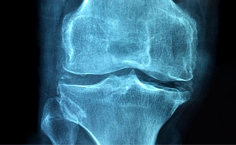Directrices para el diagnóstico y tratamiento de la insuficiencia de corticoesteroides relacionada con la enfermedad crítica (CIRCI) en pacientes críticamente enfermos (Parte I): Sociedad de Medicina de Cuidados Críticos (SCCM) y Sociedad Europea de Medicina Intensiva (ESICM) 2017.
Guidelines for the diagnosis and management of critical illness-related corticosteroidinsufficiency (CIRCI) in critically ill patients (Part I): Society of Critical Care Medicine (SCCM) and European Society of Intensive Care Medicine (ESICM) 2017.
Annane D1, Pastores SM2, Rochwerg B3, Arlt W4, Balk RA5, Beishuizen A6, Briegel J7, Carcillo J8, Christ-Crain M9, Cooper MS10, Marik PE11, Umberto Meduri G12, Olsen KM13, Rodgers S14, Russell JA15, Van den Berghe G16.
Abstract
OBJECTIVE: To update the 2008 consensus statements for the diagnosis and management of critical illness-related corticosteroidinsufficiency (CIRCI) in adult and pediatric patients. PARTICIPANTS: A multispecialty task force of 16 international experts in Critical Care Medicine, endocrinology, and guideline methods, all of them members of the Society of Critical Care Medicine and/or the European Society of Intensive Care Medicine.
DESIGN/METHODS: The recommendations were based on the summarized evidence from the 2008 document in addition to more recent findings from an updated systematic review of relevant studies from 2008 to 2017 and were formulated using the Grading of Recommendations Assessment, Development, and Evaluation (GRADE) methodology. The strength of each recommendation was classified as strong or conditional, and the quality of evidence was rated from high to very low based on factors including the individual study design, the risk of bias, the consistency of the results, and the directness and precision of the evidence. Recommendation approval required the agreement of at least 80% of the task force members. RESULTS: The task force was unable to reach agreement on a single test that can reliably diagnose CIRCI, although delta cortisol (change in baseline cortisol at 60 min of <9 µg/dl) after cosyntropin (250 µg) administration and a random plasma cortisol of <10 µg/dl may be used by clinicians. We suggest against using plasma free cortisol or salivary cortisol level over plasma total cortisol (conditional, very low quality of evidence). For treatment of specific conditions, we suggest using intravenous (IV) hydrocortisone <400 mg/day for ≥3 days at full dose in patients with septic shock that is not responsive to fluid and moderate- to high-dose vasopressor therapy (conditional, low quality of evidence). We suggest not using corticosteroids in adult patients with sepsis without shock (conditional recommendation, moderate quality of evidence). We suggest the use of IV methylprednisolone 1 mg/kg/day in patients with early moderate to severe acute respiratory distress syndrome (PaO2/FiO2 < 200 and within 14 days of onset) (conditional, moderate quality of evidence). Corticosteroids are not suggested for patients with major trauma (conditional, low quality of evidence). CONCLUSIONS: Evidence-based recommendations for the use of corticosteroids in critically ill patients with sepsis and septic shock, acute respiratory distress syndrome, and major trauma have been developed by a multispecialty task force.
KEYWORDS: Acute respiratory distress syndrome; Corticosteroids; Critical illness; Glucocorticoids; Major trauma; Sepsis; Septic shock
| 






